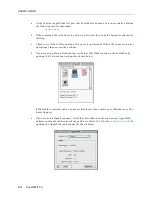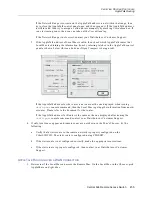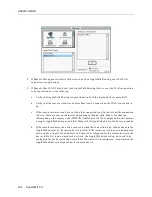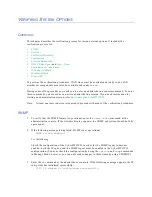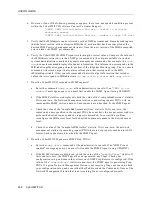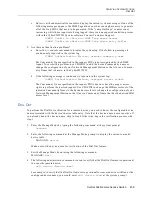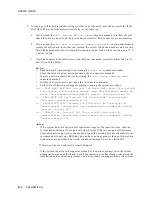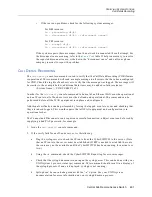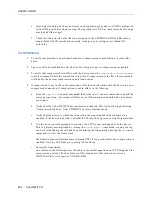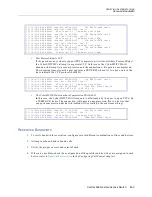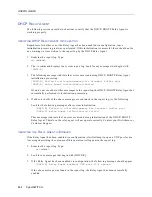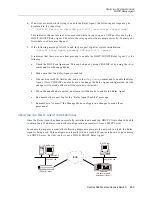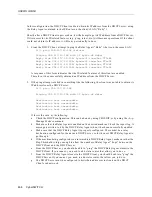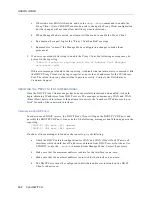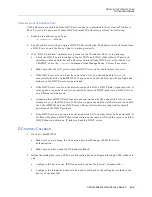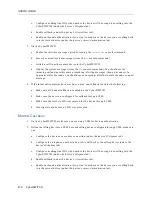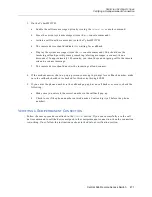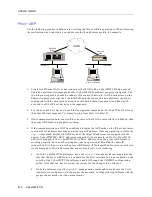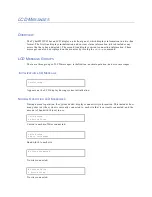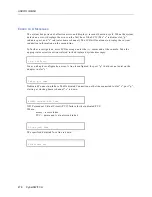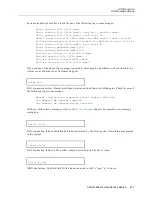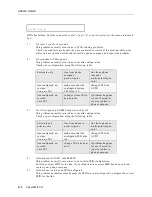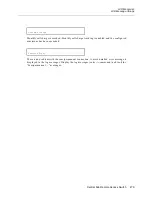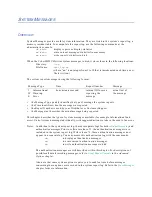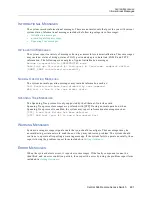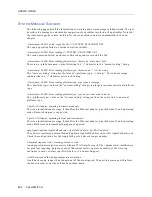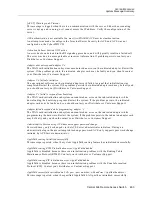
USER’S GUIDE
468 CyberSWITCH
c.
If desired, enter MANAGE mode, and use the
dhcp change
command to enable the
Proxy Client. (Note: CFGEDIT can also be used to change the Proxy Client configuration;
but the changes will not take effect until the system is restarted.)
d. When Manage Mode is exited, an attempt will be made to enable the Proxy Client.
e.
Re-examine the report log for the “Proxy Client Enabled” message.
f.
Remember to “commit” the Manage Mode configuration changes to make them
permanent.
5.
If an error occurred while trying to enable the Proxy Client, the following message may be
present in the report log:
[DHCP-P] Failed to register with the IP Address Pool Manager,
erc=<error code>
If this error message is found in the report log, it indicates that an internal error occurred while
the DHCP Proxy Client was trying to register as a provider of addresses for the IP Address
Pool. Therefore, the proxy client will not operate correctly. Contact your Distributor or
Customer Support.
V
ERIFYING
THE
P
ROXY
C
LIENT
IS
O
PERATIONAL
Once the DHCP Proxy Client manager has been successfully initialized and enabled, it should
begin obtaining IP addresses from DHCP servers. The manager examines any WAN and WAN
(Direct Host) network interfaces. It then attempts to satisfy the “number of IP addresses to pre-
fetch” for each of these network interfaces.
V
ERIFICATION
OF
UDP P
ORTS
In order to reach DHCP servers, the DHCP Proxy Client will open the BOOTPC UDP port, and
possibly the BOOTPS UDP port. One or both of the following messages should then appear in the
report log:
[DHCP-P] UDP port (67) opened
[DHCP-P] UDP port (68) opened
If neither of these messages is found in the report log, try the following:
a.
Check the DHCP-related configuration for WAN and WAN (Direct Host) IP network
interfaces which should have IP addresses obtained from DHCP servers for them. Use
CFGEDIT, or use the
ipnetif
command from Manage Mode. Correct if necessary.
b.
Make sure that the maximum addresses to obtain for the interface is non-zero.
c.
Make sure that the number of addresses to pre-fetch for the interface is non-zero.
d. The DHCP Server must be configured to distribute addresses to clients on the DHCP
Client’s subnetwork.

